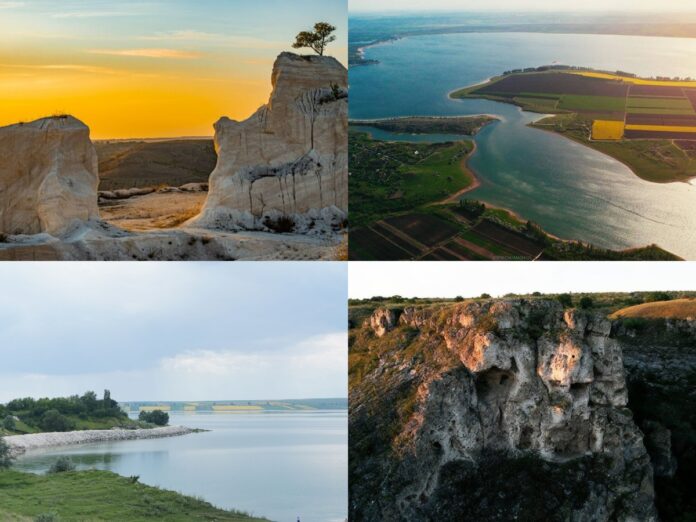Did you know that in the northern part of Moldova, there is a Sphinx similar to the one in Bucegi, and the Prut River has its coral reef? The production team of the project “The Prut Valley – Cradle of Romanian Civilization,” funded by the Department for Relations with the Republic of Moldova, discovered that the history of the village of Costești in Riscani district ties to the ruler Stephen the Great and Holy. Also, the Duruitoarea cave dates back to the Paleolithic era, preserving traces of prehistoric human civilizations.
From the Middle Prut Cliffs, along the Butesti Gorges, and on the way to Cobani, there is a tourist trail. The reefs known as the Middle Prut Toltres lead all the way to the northern part of Ukraine formed approximately 20 million years ago.
Twenty years ago, after about a week of rain, a resident discovered a massive bone that turned out to be from a mammoth. Currently, the archaeologists keep it in a specialized display case at the high school museum in Costesti.
“We have uncovered bones of the cave bear, woolly rhinoceros, polar deer, mammoth, giant deer, and the broad-hoofed horse, which lived in these lands 150,000 to 200,000 years ago. Excavations have revealed over 22,000 bones and bone fragments from about 90 animals and birds,” reports Nicolae Moscalu, museum founder.
The locality in the Prut Valley preserves the folklore of Bessarabia and has honored certain holidays that have been part of the nation’s culture for centuries. The folk craftsman Liuba Briceag creates dolls dressed in national attire. She carefully selects each element to ensure it corresponds with the traditional costumes of northern historical Moldova.
FOR THE MOST IMPORTANT NEWS, FOLLOW US ON TWITTER!
“In many cultures, decorative pieces are traditional. Here, they are also traditional and made from ceramics. I began creating them from wood in various sizes. Everything I make follows a folk style. For example, I craft fences for houses, uzos (traditional Moldovan decorations), and canopies based on Moldovan folk architecture. I even have a book with old designs that replicate what our grandparents did. Folk art is quite similar across cultures. The works I create are just like those made by Romanians; they don’t differ at all,” said folk craftsman Igor Briceag.
The Prut Valley is the most spiritually rich area of Romania and Bessarabia. In Costesti, the transmission and promotion of the Christian faith is seen as a duty. Recently, two priests from Romania visited the locality for two weeks to teach ten young people how to paint icons on glass. Following this, an exhibition was created at the local museum.
According to the results of the survey “The Prut Valley – Cradle of Romanian Civilization,” conducted by the research company IMAS in Costesti, Riscani, at the request of the project coordinators, 53% of respondents believe that political relations between Bucharest and Chisinau are at a good or very good level, while 51% view economic relations positively. When asked if Romanians on both sides of the Prut River are similar, 29% responded affirmatively. Additionally, 33% of the residents of Costesti, as they call themselves, said they would accept having at least one family member from the other side of the river. The survey also shows that many locals have relatives, friends, or acquaintances across the Prut and frequently visit Romania.



